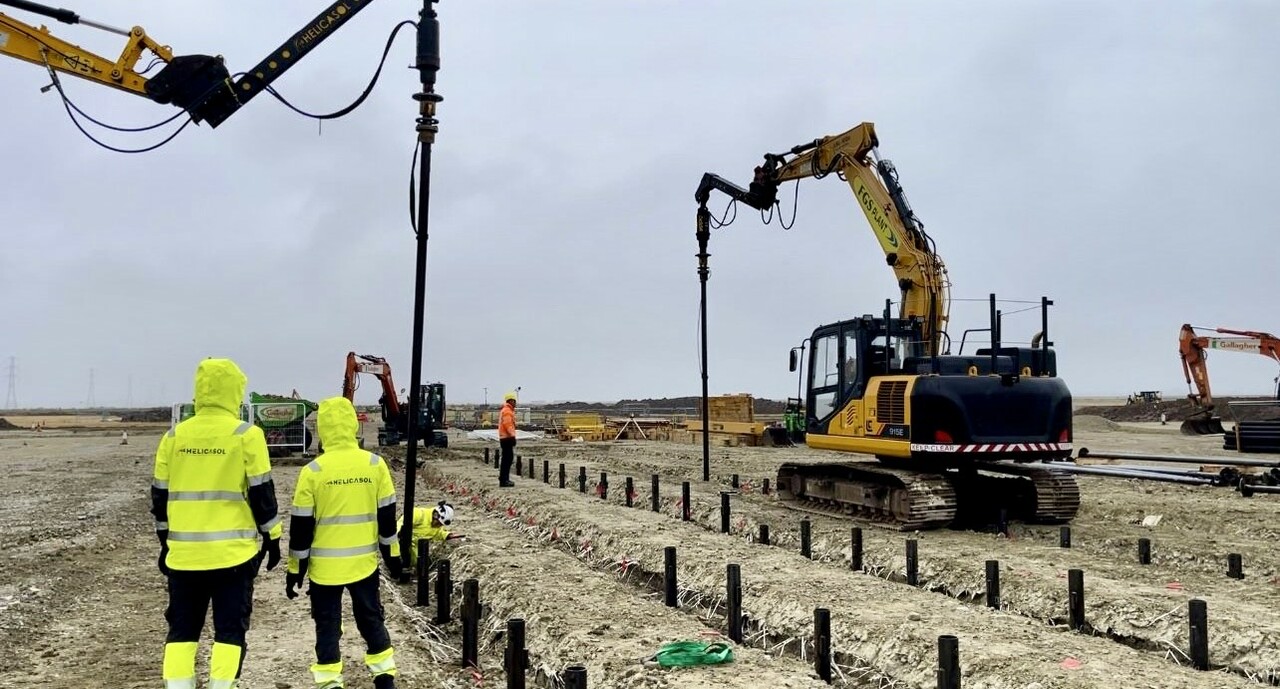
When you’re planning the installation of battery storage containers, it’s vital to select the right foundation solution. There are a range of options available, but the foundations you choose will impact your budget, the speed of installation, the time it takes for your battery storage to become viable, and the longevity of the structure. Screw piles are becoming an increasingly popular choice for deployment in this scenario. But how do you know if they are right for you?
Using Screw Pile Foundations for Battery Storage Containers
What are screw piles?
Screw piles, also known as helical piles, are made up of a central steel shaft with external helical bearing plates. They screw directly into the ground without need for any excavation. And are typically installed using a groundworks vehicle, but hand installation can be performed where there is limited space or access. Installation causes minimal ground disturbance, which is one of the reasons that screw piles are gaining popularity. They are also quick to install and can be used immediately. Another benefit of screw-piling for battery storage in contrast to concrete piles, is that the screw-piles can easily be removed and/or recycled if needed.
Screw piles work by transferring the load of the structure into the soil through the bearing plates. Pre-engineered, they come in a variety of lengths and diameters to suit a range of load capacity and project types. While screw piles are particularly favoured in flood prone or sandy areas, they can work well in a variety of conditions. Including heavy clay, and areas where there may be tree roots to navigate. The only real limitations for screw piles lie in areas with shallow bedrock or ground with an abundance of obstructions at multiple depths.
What to consider before selecting the foundations for your battery storage containers
Screw piles may not work for every battery storage site. So, before selecting your foundation type, you need to take into account the following factors:
- The type, size, and weight of the battery storage container.
- The site location – including accessibility and its relationship to the surrounding buildings.
- The geology of the site – what are the ground conditions, and soil type? Are there likely to be rocks, tree roots, or other obstacles in the soil?
- The time you have available – while solutions such as screw piles can be quick to install and ready to use immediately, concrete foundations require excavation and drying time, which can be impacted by weather conditions.
- Your budget.
Once you have assessed all of these factors, you can be sure that you have selected the right foundation type. And if that happens to be screw piles, you will be well positioned to calculate the correct type and number for the project.
How to install screw piles for battery storage containers
Once you have conducted a detailed geotechnical investigation, you will have the information you need to assess the type and number of screw piles you need. In most instances, screw pile installation is managed through the use of an excavator with a screw-piling drive unit attached.
The piles are screwed into the ground, just as you would fix a screw into wood. It’s important to check the torque as you go as this will inform the screw-piles ultimate load capacity. The screw piles should be placed at regular intervals – typically 8 to ten feet apart or at each corner of the battery storage container, depending upon its size. Once the piles are in place, you can fix a bearing plate on top, and they are ready to use immediately.
When selecting screw pile foundations for battery storage containers, it’s important to install the right length and diameter to suit both the load of your project and your soil conditions. If in doubt, consult an experienced deep foundation engineer.
Find out more about UK Helix’s screw pile services.